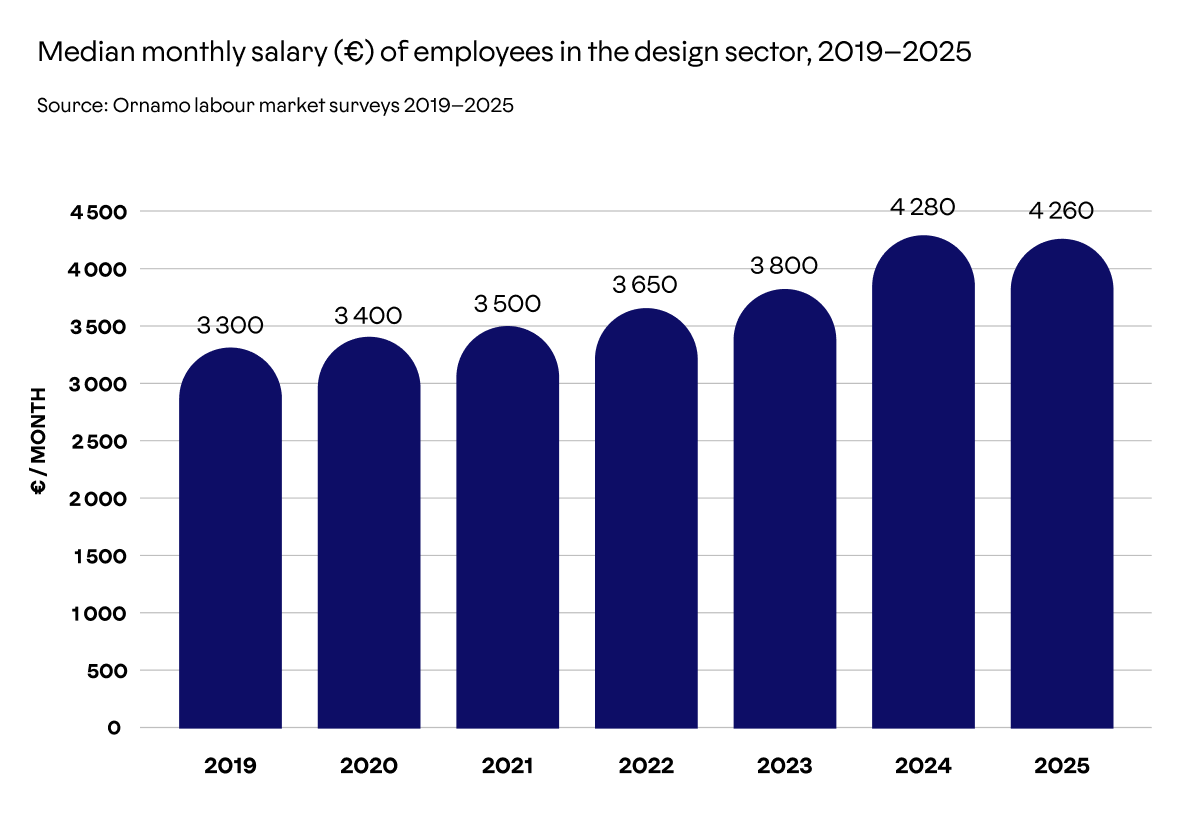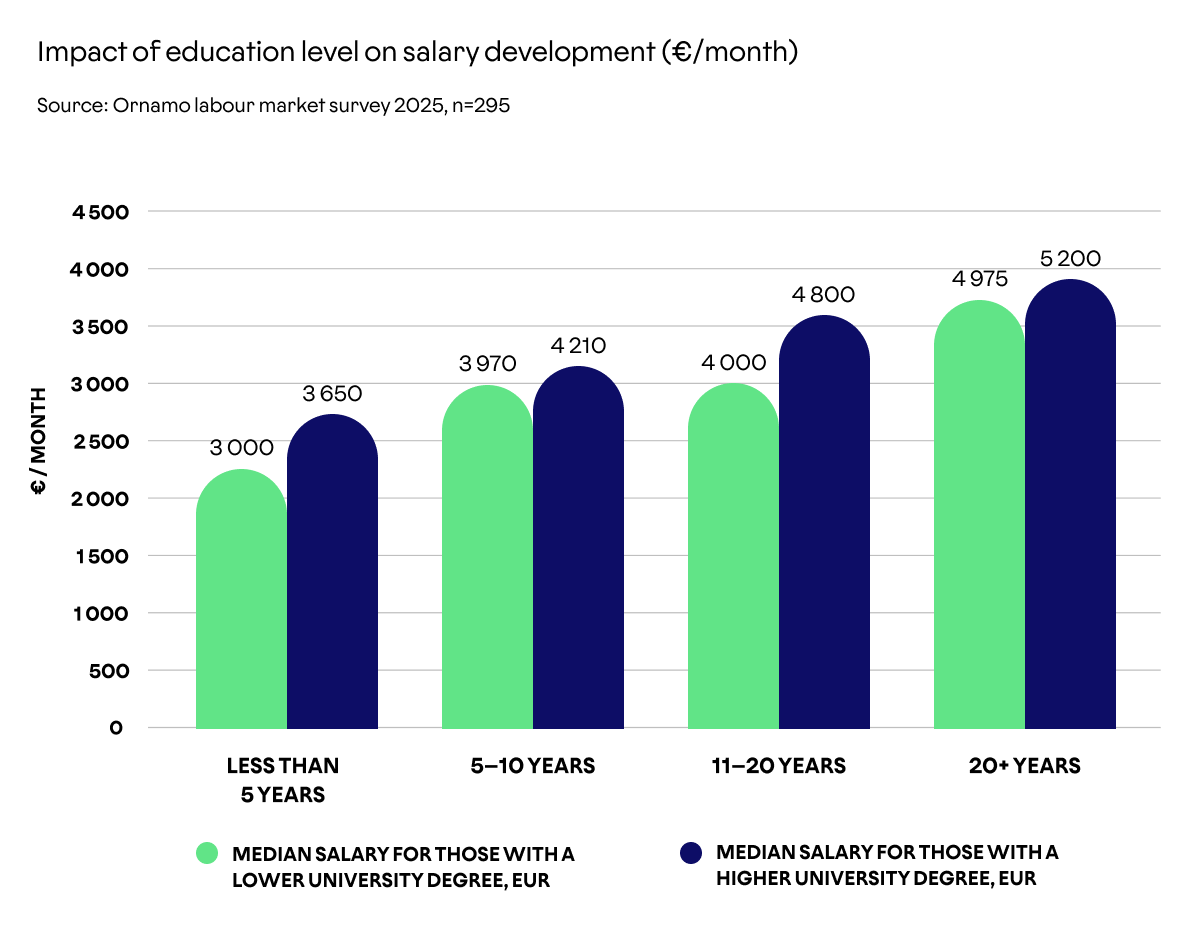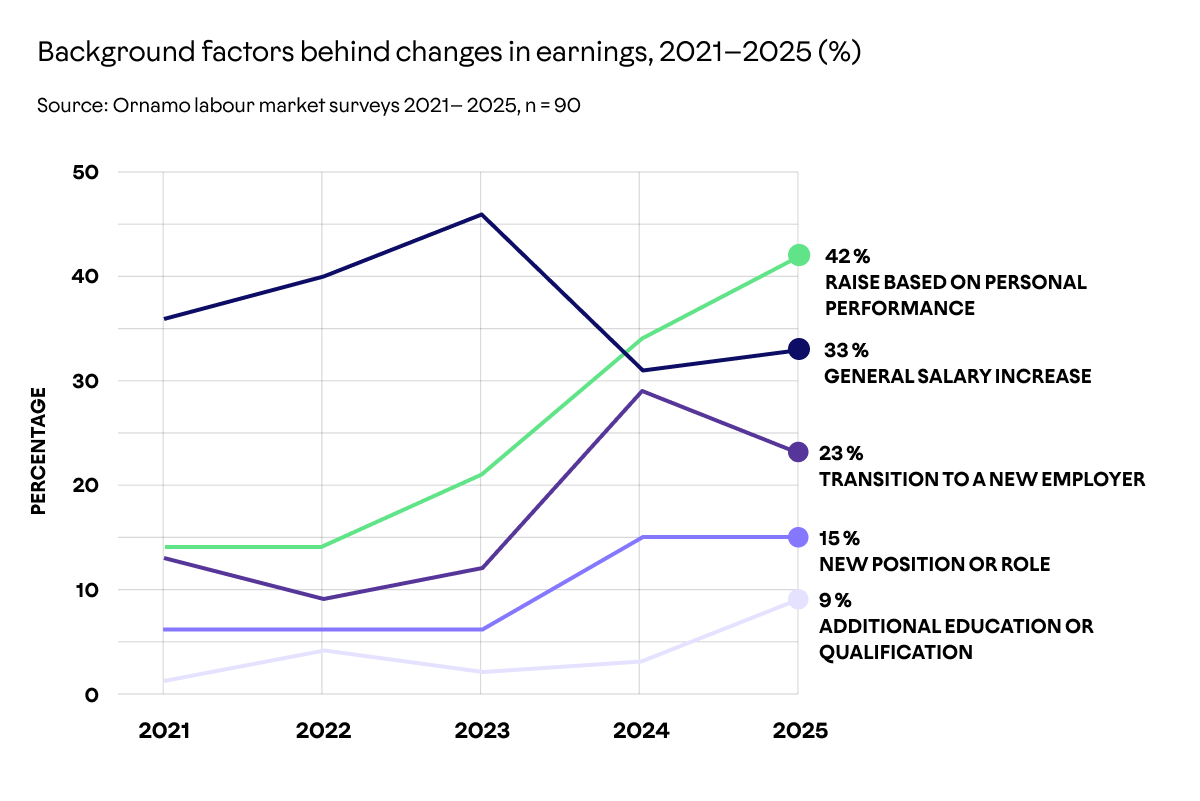Are you ready to talk about salaries?

The diversity of the design field, education, different career paths, and location are reflected in professionals’ salaries. Do you know how much digital designers or interior architects earn? And who are the most satisfied with their income? Why should employers prepare to talk openly about salaries now?
At the beginning of 2025, the median salary for designers was €4,260, and the average was €4,524. The proportion of those earning over €5,000 per month has increased, even though the overall level has remained relatively stable.

The highest earners are experienced managers and strategic designers working in large public sector organizations, with salaries exceeding €6,000 per month. On the other end are early-career designers in small design studios, typically earning around €3,000.
The best-paying industries are finance, ICT, and service sectors (excluding design studios). In design studios, salaries are slightly below average, around €4,000.
Work experience matters – especially for those with a lower degree
Education pays off, and differences in educational background are evident from the first employment contract. Among those with less than five years of work experience, those with a master’s degree earn on average €650 more than those with a bachelor’s degree.

Practical experience becomes increasingly important as careers proceed. Work experience is the single most significant factor influencing salary development. This is especially evident among those with a lower degree, who often experience rapid career progression after graduation. However, education still has a significant impact on women’s salaries while it has no impact for men.
Public sector service designers are most satisfied with their salary
In 2025, 51% of surveyed designers were satisfied with their salary, when three years ago the same portion was 39%. The most satisfied were public sector service designers, while the least satisfied were interior architects in the private sector.
Although most designers are satisfied, nearly half (47%) felt their salary did not match the demands of their job. This indicates that despite progress, many still feel their contribution is not adequately reflected in their pay.

Designers consider an average monthly salary of €4,700 to be appropriate. Those earning €3,175 per month feel their salary is too low. Higher earners are generally more satisfied, but career background and job role naturally influence what is considered a sufficient salary.
Expectations around salary increase with education level and surrounding salary norms. Those with a lower degree are more satisfied with lower pay than those with a higher degree. Interestingly, women are more satisfied with lower salaries than men, who are also more often in higher-paying roles and work more in industries with higher pay levels.
Employer: are you ready for pay transparency?
The EU Pay Transparency Directive, coming into effect in summer 2026, will increase transparency in the workplace. Its goal is to ensure that salaries are determined based on clear and fair criteria.
The reform applies to all employers, and preparation should begin early. Employers must provide job applicants with information about starting salaries or salary ranges. Organizations with over 100 employees must regularly report on pay gaps. Employees also have the right to know how their salary compares to others in similar roles and the criteria used for pay decisions.
This reform affects not only employers but also employees and especially managers, who play a key role in salary negotiations and recruitment. Employers should now evaluate their pay practices and be ready to justify their salary policies.
The directive aims to increase transparency and combat pay discrimination. Lack of transparency is one of the biggest barriers to eliminating unexplained gender pay gaps.
Ornamo’s salary statistics support this: at the beginning of 2025, the median salary for men in the design field was €523 higher than for women. This is partly due to men’s faster career progression and advancement into leadership roles. However, salary differences appear early in careers, with no clear explanation.
Pay gaps exist across nearly all design fields and employee profiles. The exception is the public sector, where pay systems are more transparent and gender pay gaps are nonexistent. This shows that transparency is not just an obligation but a way to build a fairer working life.
Many paths to higher pay
In 2024, 28% of employees received a salary increase. Designers’ salaries are often based on industry- or company-specific collective agreements. According to Ornamo’s survey, general increases under collective agreements have long been the most common reason for raises.
In recent years, however, the importance of general increases has declined, and performance-based raises have become more central. In 2024, 42% of raises were partly or entirely based on personal performance evaluations.
Changing roles or employers and evaluations based on job demands also increasingly influenced earnings in 2024.

Working on salary development by e.g. maintaining skills or seeking new roles is worthwhile. Career and salary progression depend on how one’s skills have developed and been applied.
Salary statistics and career counseling for members
Interested? More information and statistics on design sector salaries are available on the member pages.
Book a personal counseling session! Our experts provide guidance on job searching, contracts, and salary negotiations. Learn more about personal counseling.
Background of the Pulssi Survey
The Pulse (Pulssi) survey was conducted in February–March 2025. A total of 312 employees (including those temporarily laid off) responded to the combined labour market survey. The survey was conducted by researcher Pekka Lith. The Pulssi report will be published on June 12 at a launch event (Finnish) and the report summary will be published also in English.
Median salaries were used in comparisons instead of averages, as the median is generally a better indicator as it reduces the impact of outliers that can distort the average. The median more accurately reflects what the “typical” employee earns.
